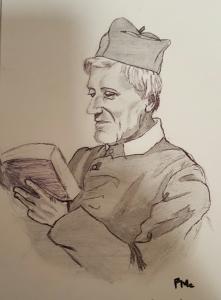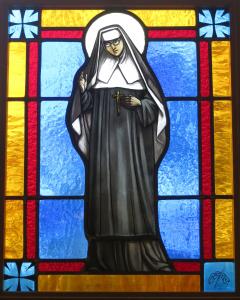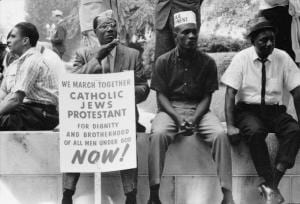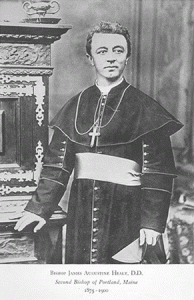Oregon Catholics have a long history of involvement in workers’ rights. One of the key figures was Holy Names Sister Miriam Theresa Gleason, who as a young lay woman in 1912 worked undercover in Portland factories to survey labor conditions.Her survey concluded that the disparity between women’s wages and their living expenses was great, and that most working conditions were intolerable. Caroline Gleason, as she was known then, was excoriated by some as a spy. Reflecting on her work from that period, the aging sister remembered herself as “a young woman that many Oregon and Washington manufacturers could have torn to pieces.” One business owner considered her “a terrible woman . . . worse than a lawyer.” By 1913, her work led to the nation’s first enforceable minimum wage law, guaranteeing minors $1 a day and adults $8 to $9 per week, depending on the industry. Thinking back to her early years in Portland, Sister Miriam Theresa excoriated the old apprentice system used in Portland and elsewhere. “Employers’ method of instruction, until 1913, was to retain them for a year at $1 or less a week, use them as errand girls, rippers, or basters, or at other simple work, and then dismiss them when they asked for real instruction or a real wage,” she wrote. Born to politically active Irish and French-Canadian parents in Minneapolis in 1886, Caroline attended Catholic schools and the University of Minnesota. At the suggestion of Father Edwin O’Hara, a friend of the Gleason family who ministered in Oregon, she came west. She taught Latin and English at St. Mary’s Academy and soon founded a union of Catholic women workers. That led to her groundbreaking work on labor and wage law. In 1916, sensing a lack of spirituality in her work, 30-year-old Caroline entered the Holy Names convent and took the name Miriam Theresa, continuing her advocacy work. She collaborated often with Father O’Hara, who became a leader in the new national movements of social justice and the mission of Catholic laity. Sister Miriam Theresa believed that “the education of youth is one of the best means of achieving social justice.” So she served as an educator for more than 40 years, first at St. Mary’s Academy and later at Marylhurst College, offering courses on labor law and social reform. Along the way, she earned a doctorate in economics. Her dissertation, on Oregon’s labor movement and the minimum wage and hour law, was published by the U.S. Department of Labor in 1931. Captains of government regularly consulted Sister Miriam Theresa on labor issues. She was asked to mediate disputes in the state over the wage and hour law during the mid-1930s, and during the Roosevelt Administration, Secretary of Labor Frances Perkins sought her participation in a Pacific coast conference on labor. She died at Marylhurst in 1962, suffering a stroke on a city bus as she was riding into Portland to do research. She is buried in the Sisters’ cemetery at Marylhurst. Despite the scorn of industrialists a century ago, historians remember Sister Miriam Theresa as a pragmatic reformer, not a revolutionary.
As Women’s History Month continues, The Oregon Catholic Sentinel highlights the story of a woman who deserves more attention that she’s gotten:












